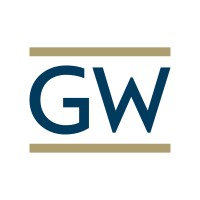
The George Washington University
The George Washington University, an independent academic institution chartered by the Congress of the United States in 1821, dedicates itself to furthering human well-being. The University values a dynamic, student-focused community stimulated by cultural and intellectual diversity and built upon a foundation of integrity, creativity, and openness to the exploration of new ideas. The George Washington University, centered in the national and international crossroads of Washington, D.C., commits itself to excellence in the creation, dissemination, and application of knowledge. To promote the process of lifelong learning from both global and integrative perspectives, the University provides a stimulating intellectual environment for its diverse students and faculty. By fostering excellence in teaching, the University offers outstanding learning experiences for full-time and part-time students in undergraduate, graduate, and professional programs in Washington, D.C., the nation, and abroad. As a center for intellectual inquiry and research, the University emphasizes the linkage between basic and applied scholarship, insisting that the practical be grounded in knowledge and theory. The University acts as a catalyst for creativity in the arts, the sciences, and professions by encouraging interaction among its students, faculty, staff, alumni, and the communities it serves. The George Washington University draws upon the rich array of resources from the National Capital Area to enhance its educational endeavors. In return, the University, through its students, faculty, staff, and alumni, contributes talent and knowledge to improve the quality of life in metropolitan Washington, D.C.






